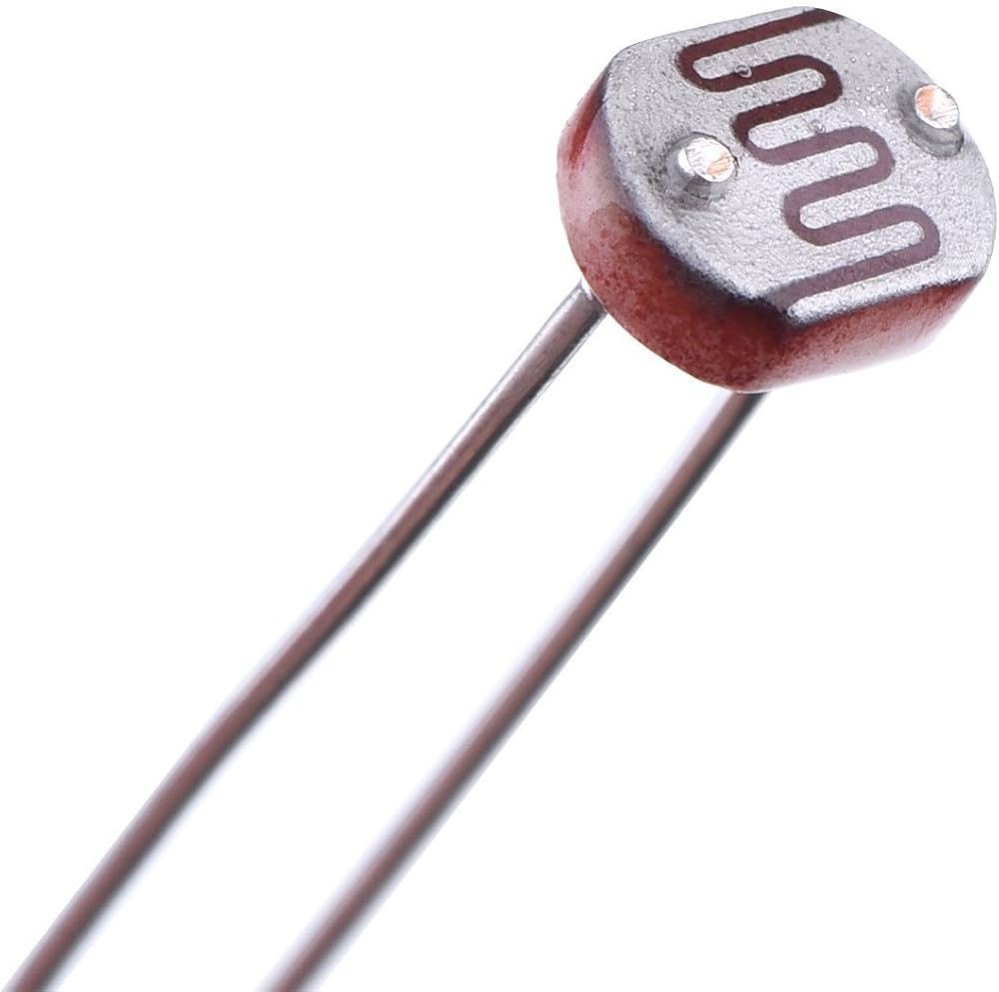








12MM LDR
It looks like you're referring to "12MM LDR," but could you clarify what "LDR" stands for in your context? "LDR" can stand for several things depending on the field (e.g., Light Dependent Resistor, Low Density Residential, etc.), and "12MM" could refer to a measurement like 12 millimeters.
₹ 18 ₹29
29
Add FAQ
A 12mm LDR (Light Dependent Resistor) is a type of photoresistor whose resistance decreases as the amount of light falling on it increases. LDRs are widely used in applications such as light sensors, automatic light control systems, and light-sensitive switches.
Here are the general specifications for a 12mm LDR:
General Specifications of 12mm LDR:
-
Size/Dimension:
- 12mm (diameter)
- Length of the lead (varies by manufacturer, typically 20-30mm)
-
Resistance:
- Dark Resistance (no light exposure): Typically 1 MΩ to 10 MΩ
- Light Resistance (under normal light conditions): Typically 10 kΩ to 50 kΩ or lower (depending on the intensity of light)
-
Light Sensitivity:
- The LDR is sensitive to the visible light spectrum (approximately 400 nm to 700 nm wavelength)
- Sensitivity and response time may vary based on the specific model and material used.
-
Spectral Response:
- Most 12mm LDRs are sensitive to a wide range of light, including visible light, infrared light, and sometimes ultraviolet (UV) light. Peak sensitivity is typically around 550 nm, which is green light.
-
Maximum Power Rating:
- LDRs can usually handle up to 100 mW of power, but it is important to check the datasheet of the specific model you are using for precise information.
-
Response Time:
- Rise Time: Time taken to go from dark resistance to light resistance (typically in the order of milliseconds to seconds)
- Fall Time: Time taken to return from light resistance to dark resistance.
-
Voltage Rating:
- LDRs generally work within a wide voltage range (e.g., 5V to 15V). However, it is important to ensure that the voltage does not exceed the maximum rating for the LDR model.
-
Tolerance:
- The tolerance of the LDR varies by manufacturer, but typically, ±10% is common.
-
Material:
- Typically made from cadmium sulfide (CdS) or cadmium selenide (CdSe) as these materials exhibit high sensitivity to light.
-
Mounting:
- The 12mm LDR typically comes with leads for through-hole mounting on a circuit board or for easy wire connections. It is widely used in both hobbyist and professional electronics projects.
-
Temperature Range:
- The operational temperature range for most LDRs is typically from -30°C to +70°C.
Applications of 12mm LDR:
- Light Sensing Circuits: Used in circuits to detect ambient light levels.
- Automatic Lighting Systems: Turns lights on/off based on surrounding light conditions.
- Light Metering: Used in photography for light intensity measurement.
- Solar Tracking Systems: In solar panel systems, to track the sun’s movement.
- Alarm Systems: Detects light changes that could signal intrusion or other conditions.
- Brightness Control: Used in automatic brightness adjustment in displays and screens.
Example Electrical Characteristics:
- Dark Resistance: 1 MΩ (at no light)
- Light Resistance: 10 kΩ (at bright light)
- Illumination Range: 10-20 lux (threshold range for response)
It's important to note that the exact specifications (e.g., dark resistance, light resistance, and response time) may vary depending on the manufacturer, so it's always a good idea to check the datasheet for detailed information specific to the LDR you are purchasing.

0 Reviews For this Product












2.jpeg&width=225&quality=80)
2.jpeg&width=225&quality=80)
.jpeg&width=225&quality=80)

